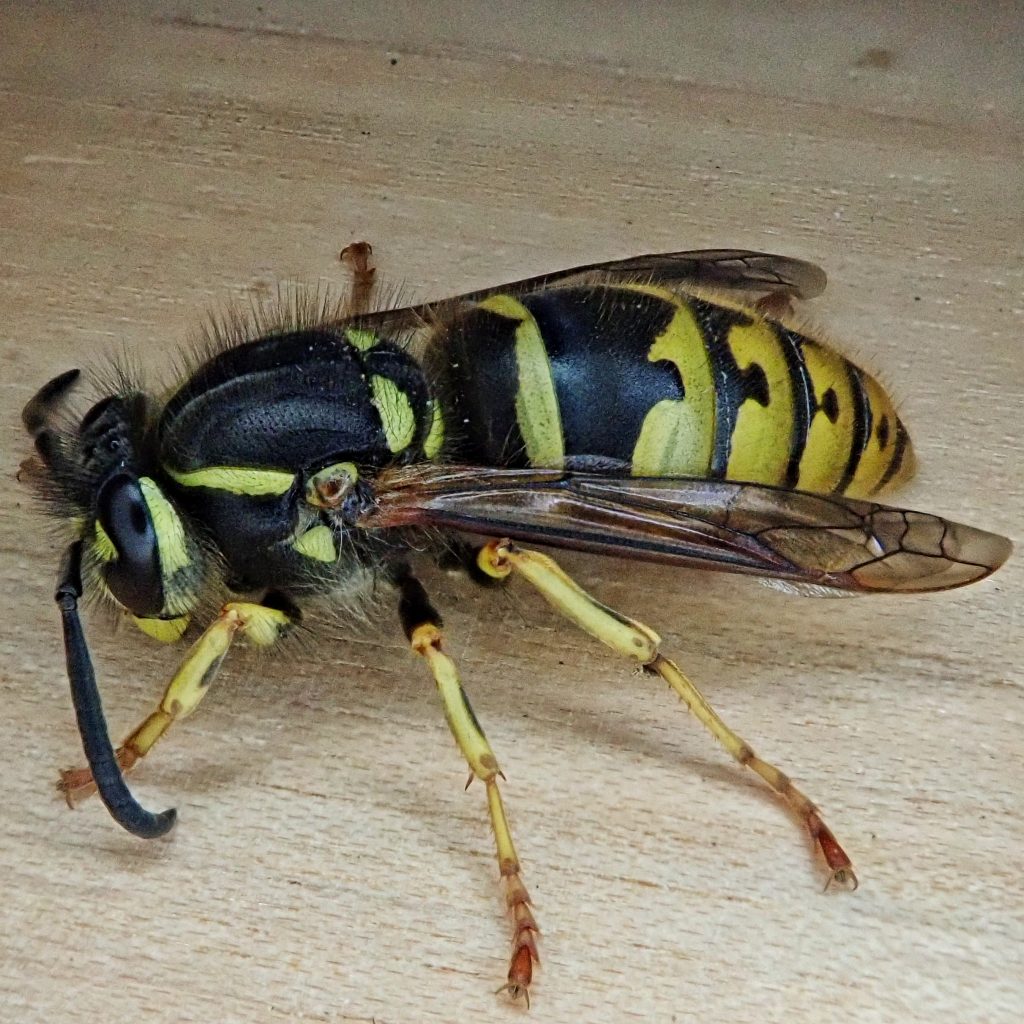
For many decades the Alaska Yellowjacket was considered to be the same species as the European Vespula vulgaris, although there was a certain amount of bad luck in that since most of the copies of the paper describing this species (Packard, 1870) were destroyed a year later in the Great Chicago Fire of 1871. But a study published 10 years ago (JM Carpenter and TR Glare; 2010) proved through morphology and genetics that Vespula alascensis is a distinct species, and V. vulgaris doesn’t appear to be present in North America.
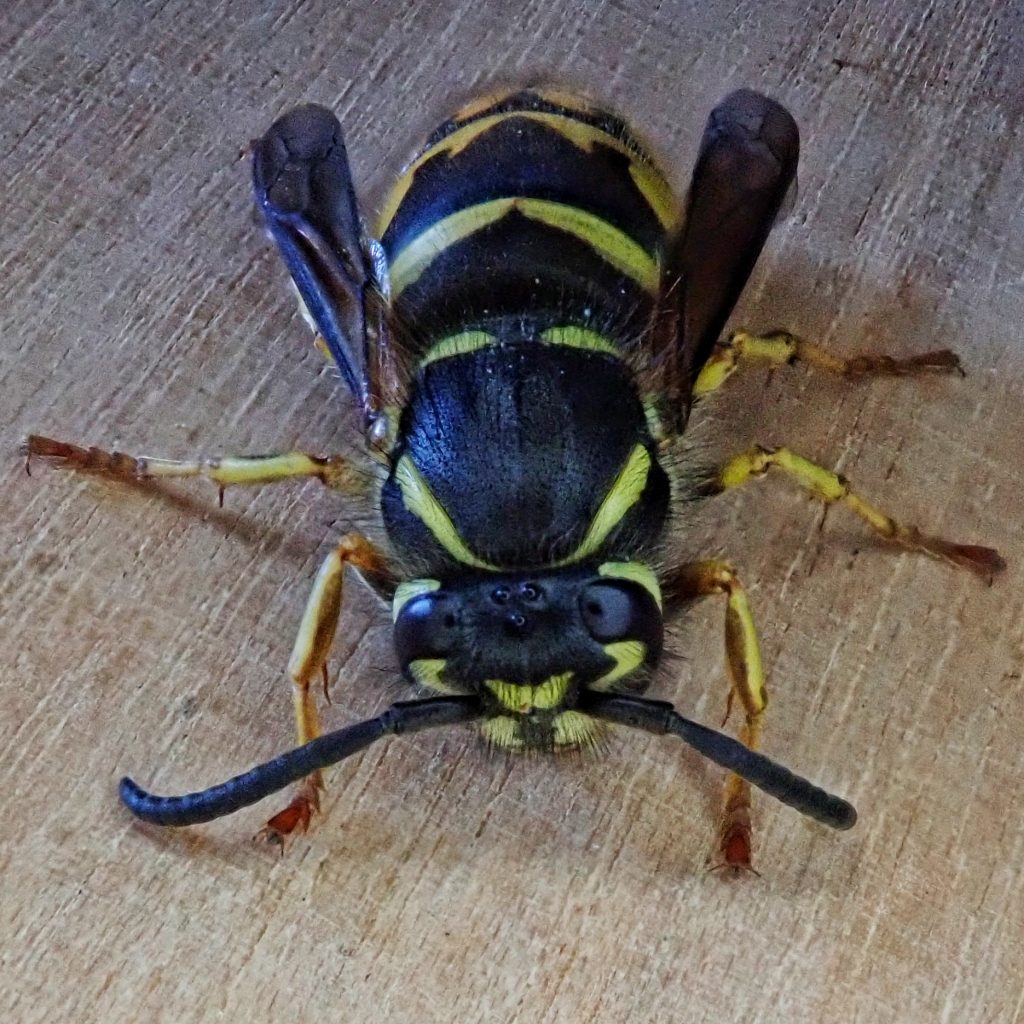
As best as I can ascertain the natural history of Vespula alascensis is very similar to that of V. pensylvanica. For more information see my profile of that species here.
Description-Black and yellow body with yellow legs. Abdomen with defined yellow markings. Pronotum with two lines on each side near the back, and yellow line along the front half and front margins. Yellow eye ring interrupted on top and behind the eye. Very narrow (about an antenna width) cheek between bottom of eye and mandible. Broad black band (supraantennal band) leading from antenna to top of head, with a convex extension into the yellow area and towards the eyes.
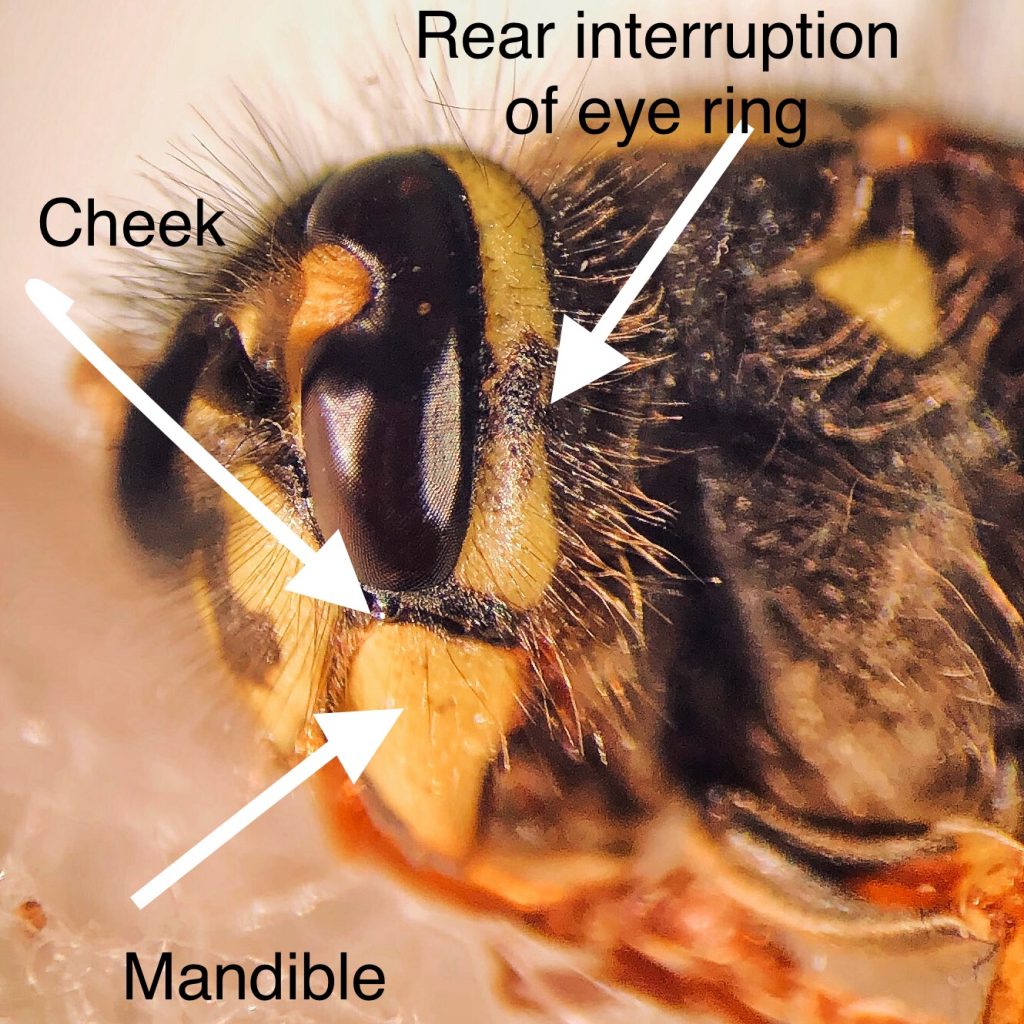
Similar species– Dolichovespula spp. have a large cheek (about 1/5 the height of the eyes) between the bottom of the eye and the mandible. No other Vespula sp have the combination of a broad supraantennal band with convex margins, and eye ring interrupted on top and behind the eye.
Habitat-Common wherever their are people and their garbage; non-anthropogenic colonies less common in the coldest and most arid parts of our region
Range– Region wide
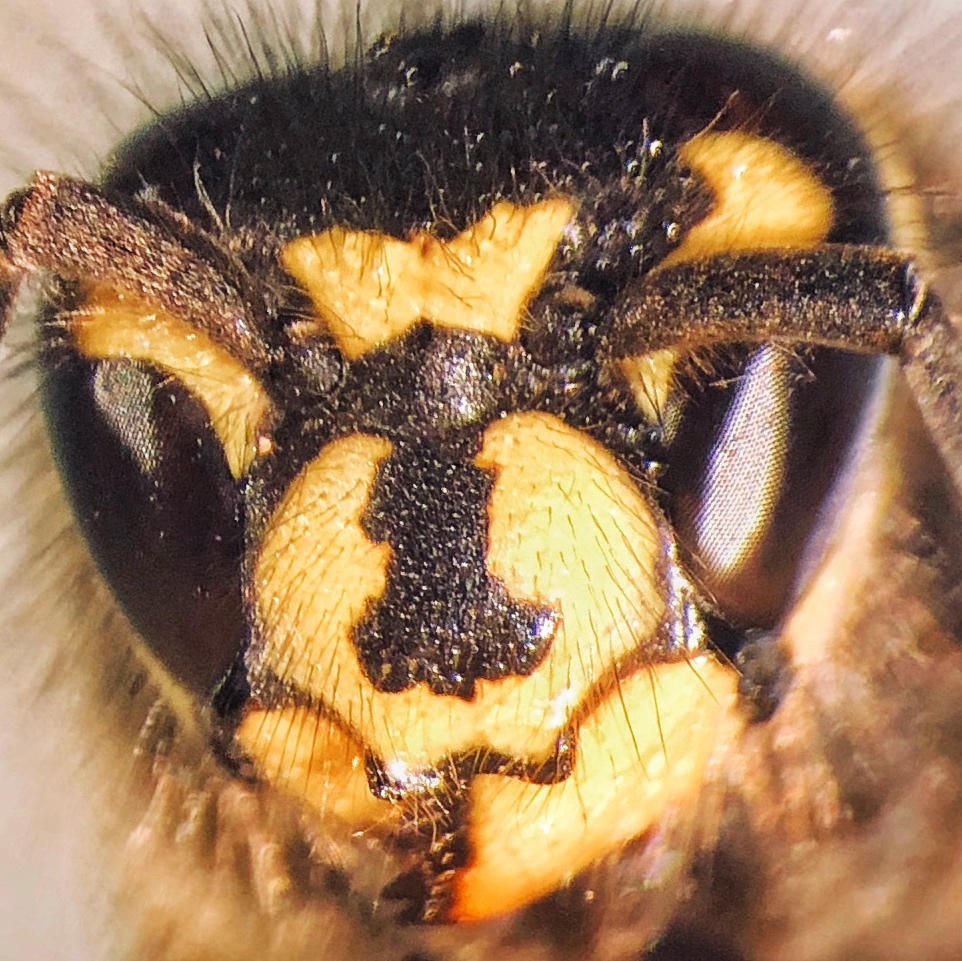
Eats– Polyphagous. Hunts and scavenges insects and other arthropods, scavenges carrion, eats fruit, and takes nectar.
Eaten by– Bears, skunks, raccoons, badgers, shrews, and moles will raid their nests, particularly at night when the yellowjackets are sluggish, dining on the protein rich larvae.
Adults active– February to November
Etymology of names–Vespula means ‘little wasp’. The species epithet alascensis refers to the holotype location on the “Lower Yukon” (Packard, 1870) in Alaska.
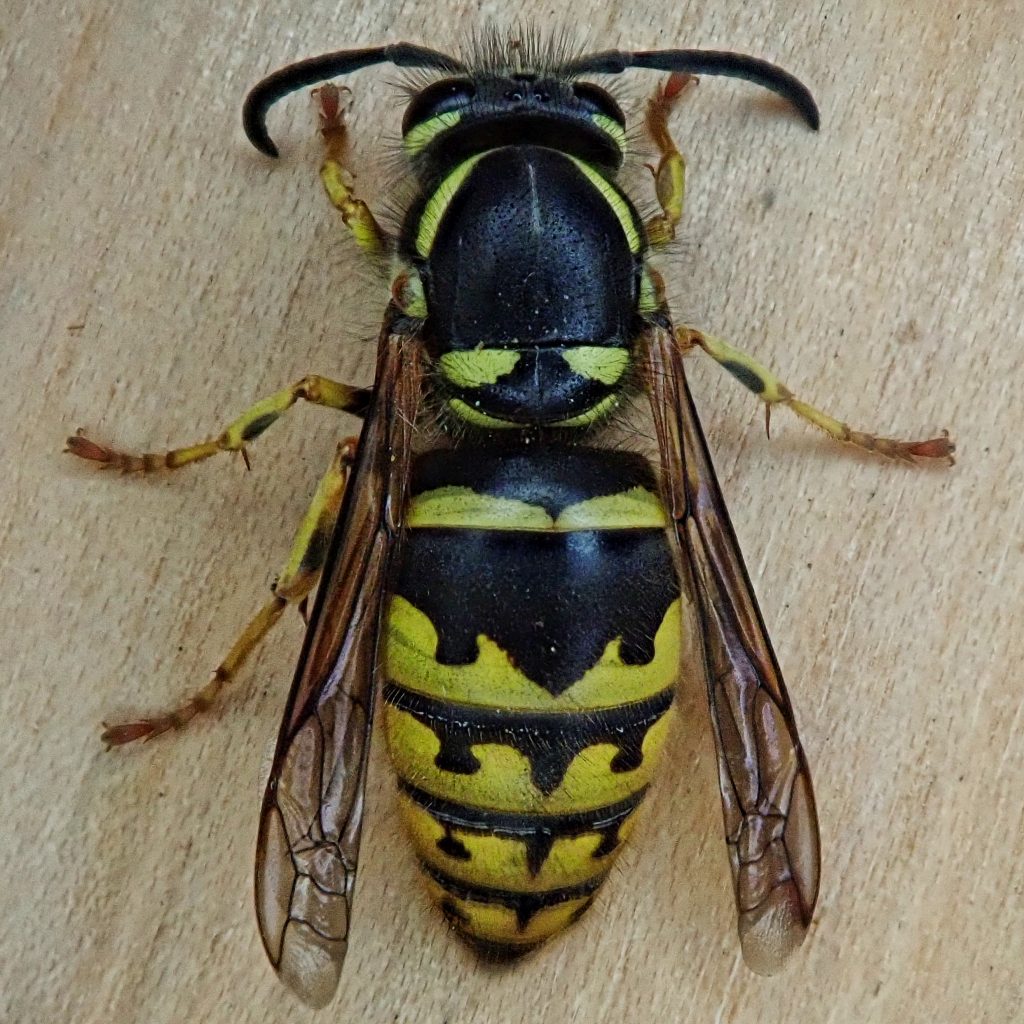
https://bugguide.net/node/view/14087
https://jhr.pensoft.net/article/1606/
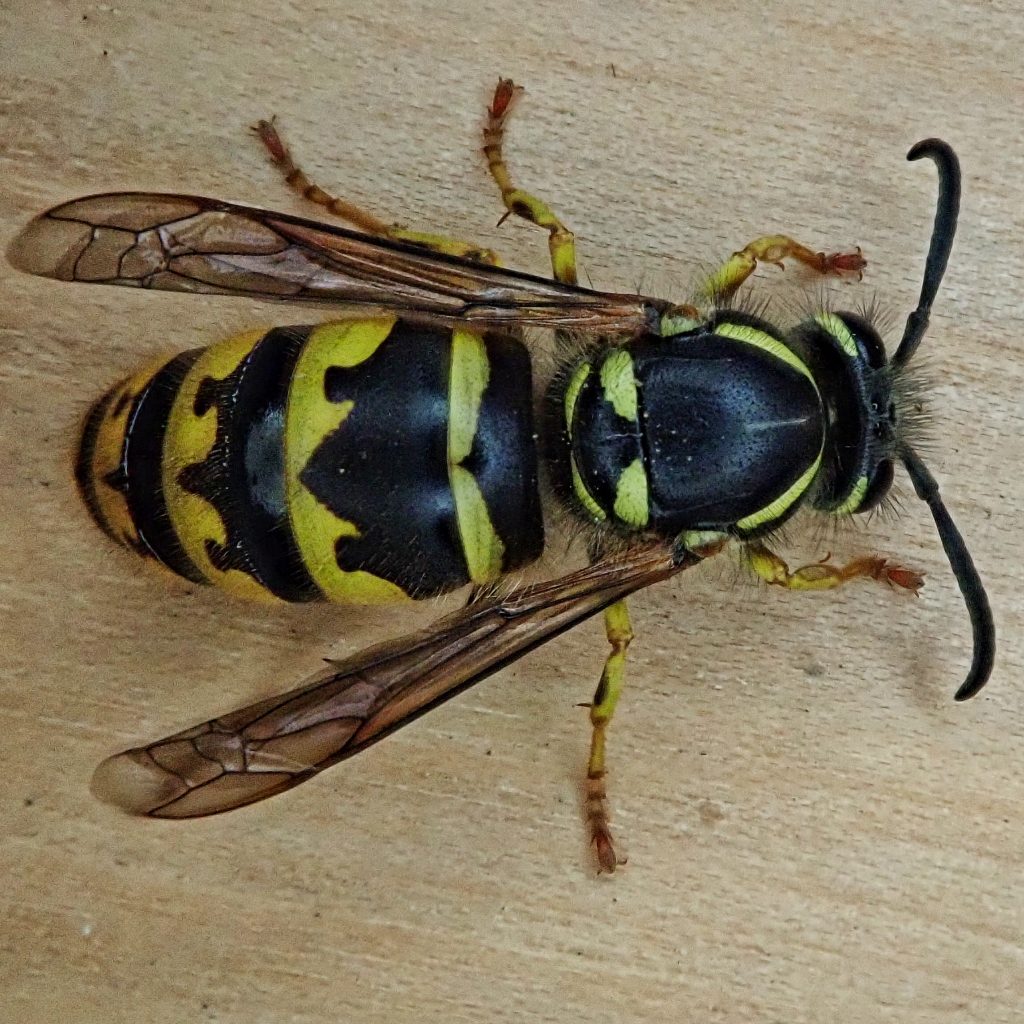
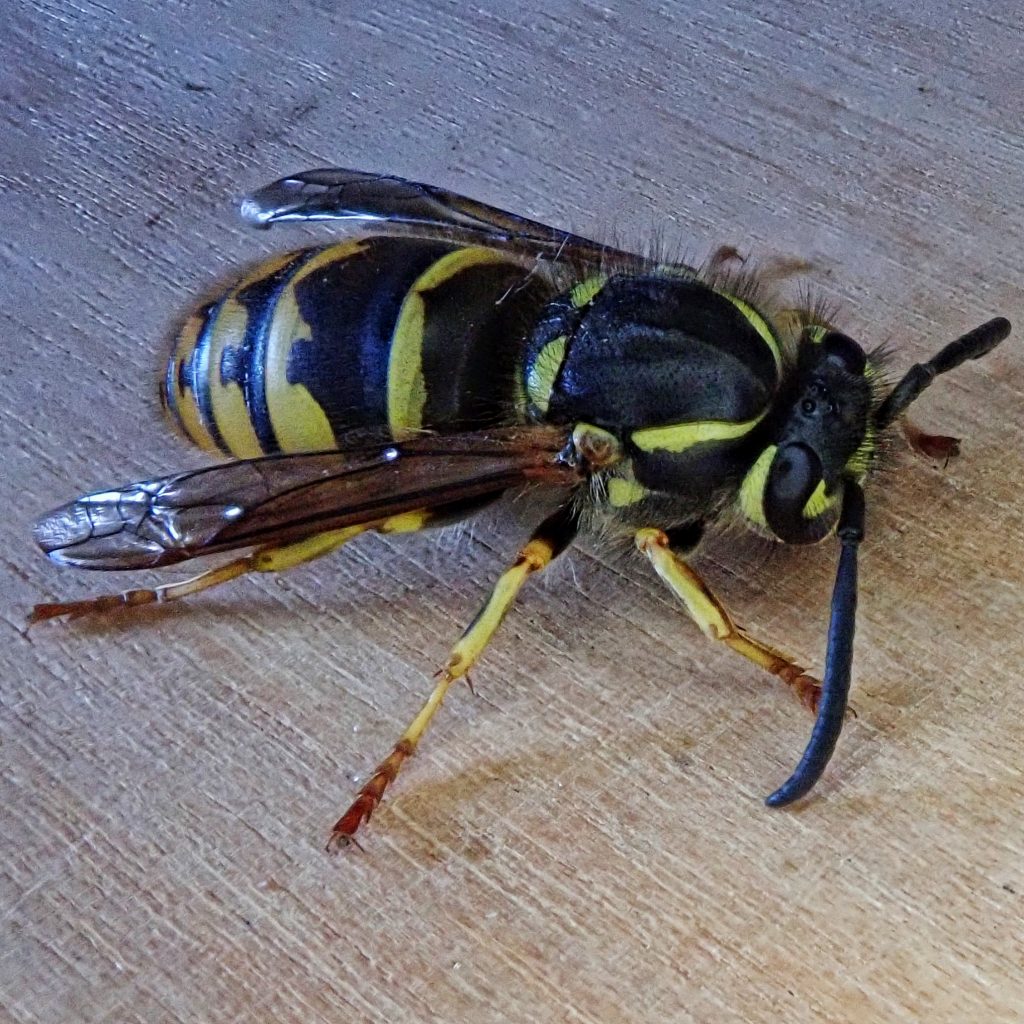
“Wherever there are people & their garbage” 😏
What are the three dots on their head? Some kind of sensory organ, for smell?
They are eyes. They’re called ocelli. Mostly motion detectors.
It’s 30 degrees out. Why are they invading my house now?
Probably because it’s 30⁰ outside and they’re looking for shelter.
Wow. What are doing out today?
Any knowledge about these?